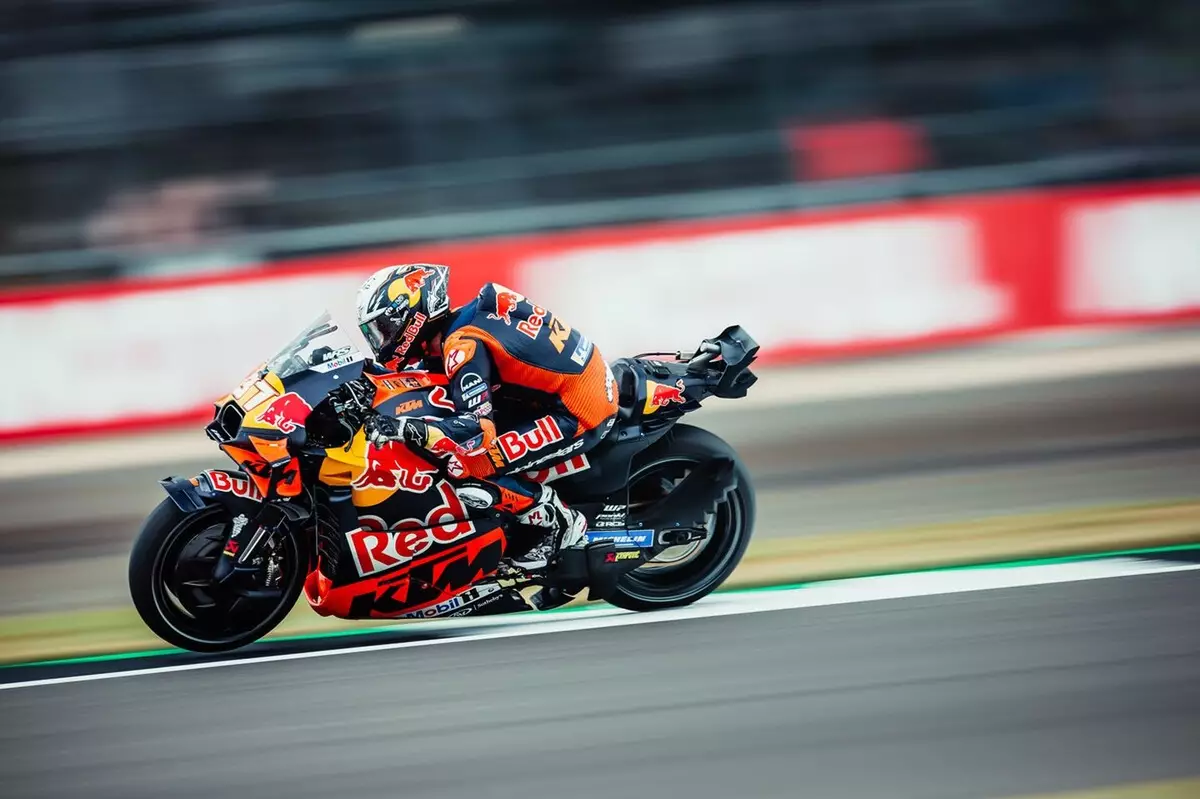The KTM team has certainly had its share of ups and downs in the current MotoGP season. As they navigate through an unpredictable schedule, it’s clear that the performance of their factory squad has not lived up to expectations. With Pedro Acosta sitting ninth in the standings and his teammate Brad Binder lagging behind at 14th, the dissatisfaction within the team is palpable. Once viewed as a potential powerhouse in the MotoGP landscape, KTM is now grappling with the challenges of maintaining consistency and ensuring they stay competitive.
While Acosta had previous success at Aragón, finishing third in both the sprint and the grand prix last season, he remains humble in his aspirations. His cautious approach reflects an understanding of the fierce competition that surrounds him. Despite his conviction to aim for top finishes, he openly recognizes that swift competitors like Francesco Bagnaia pose a significant hurdle. This instinctive restraint is a testament to Acosta’s maturity as a rider, yet it also highlights a pressing concern: the capacity of KTM’s machinery to keep pace with the leaders.
The Struggles of Qualifying
Acosta’s recent criticism of KTM’s qualifying performance echoed a sentiment that many fans and analysts share. Labeling the team’s qualifying efforts as “a disaster” is illustrative of the growing frustration within the garage. The expectation of delivering at least a respectable position in qualifying has not been met, and with results such as 12th place being deemed subpar, questions begin to arise about the team’s overall strategy. For a rider with Acosta’s skill level, consistently qualifying so low is not reflective of his capabilities or ambitions.
Furthermore, this struggle in qualifying speaks volumes about broader issues concerning bike performance and race readiness. Rapid advancements in technology and upgrades from competitors mean that teams must adapt in real-time. The stakes in MotoGP are incredibly high, and once a team begins to fall behind in terms of qualifying speed and race pace, it can become a vicious cycle. The inability to put in competitive lap times often translates into poor race outcomes, fostering a sense of defeat that permeates the team.
A Glimpse into the Future
While the immediate outlook appears dim, it’s notable that both Acosta and Binder are hopeful about KTM’s long-term trajectory. Their recent visit to the factory’s headquarters in Mattighofen has provided a promising glance into the manufacturer’s future plans. Engaging with the engineers and seeing the innovative projects underway instills a degree of optimism among the riders. Binder’s words reflect a shared understanding that while immediate results are crucial, the foundation being built today is paramount for success in the coming years.
The long-term approach being taken by KTM, however, does carry its own set of risks. With speculative discussions regarding new regulations set to roll out by 2027, there lies a chance that the current KTM lineup may need to endure a period of struggle before enjoying the fruits of their labor. This gamble could jeopardize their position on the grid, particularly if competitors remain steadfast while KTM is still playing catch-up.
The Importance of Development
As Binder identifies, the development focus is starting to align with the specific needs of the riders. Improvements in agility and speed through corners could spell the difference between mediocrity and excellence. It’s crucial for KTM to convert insights gained from rider feedback into actionable changes in bike design and performance. The engineering prowess shown at Mattighofen must translate into tangible results on the racetrack, or the risk of losing competitive edge will only grow.
Ultimately, the journey that KTM is on—a mix of rebuilding with an eye toward the fast-approaching future—is laden with uncertainty. As fans, supporters, and the MotoGP community watch the unfolding saga, there’s a blend of anticipation and concern. Will KTM rise to the occasion and reclaim its position in the upper tiers of competition, or will the uncertainty surrounding its short-term strategy hamper its quest for dominance in the years to come? The answers lie ahead, but the tides of MotoGP can shift rapidly—one podium finish at a time.


Leave a Reply